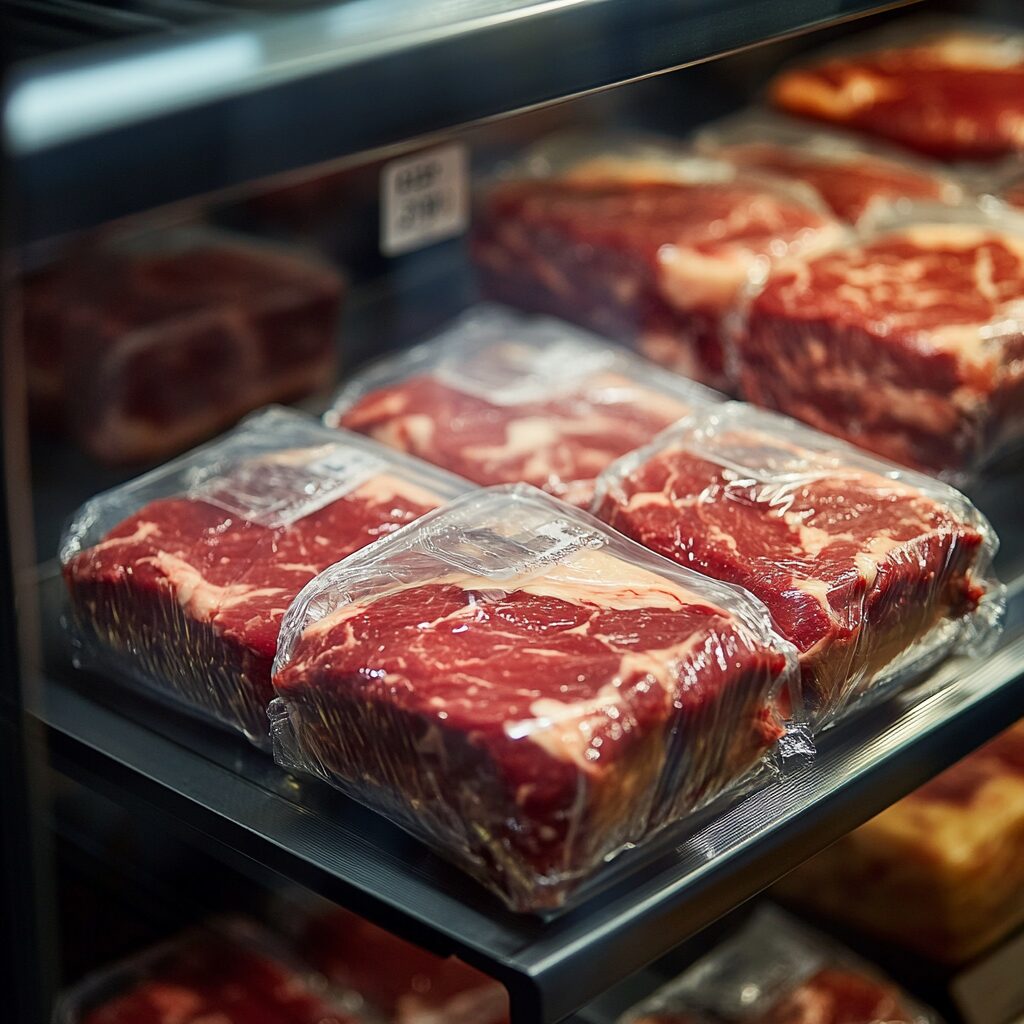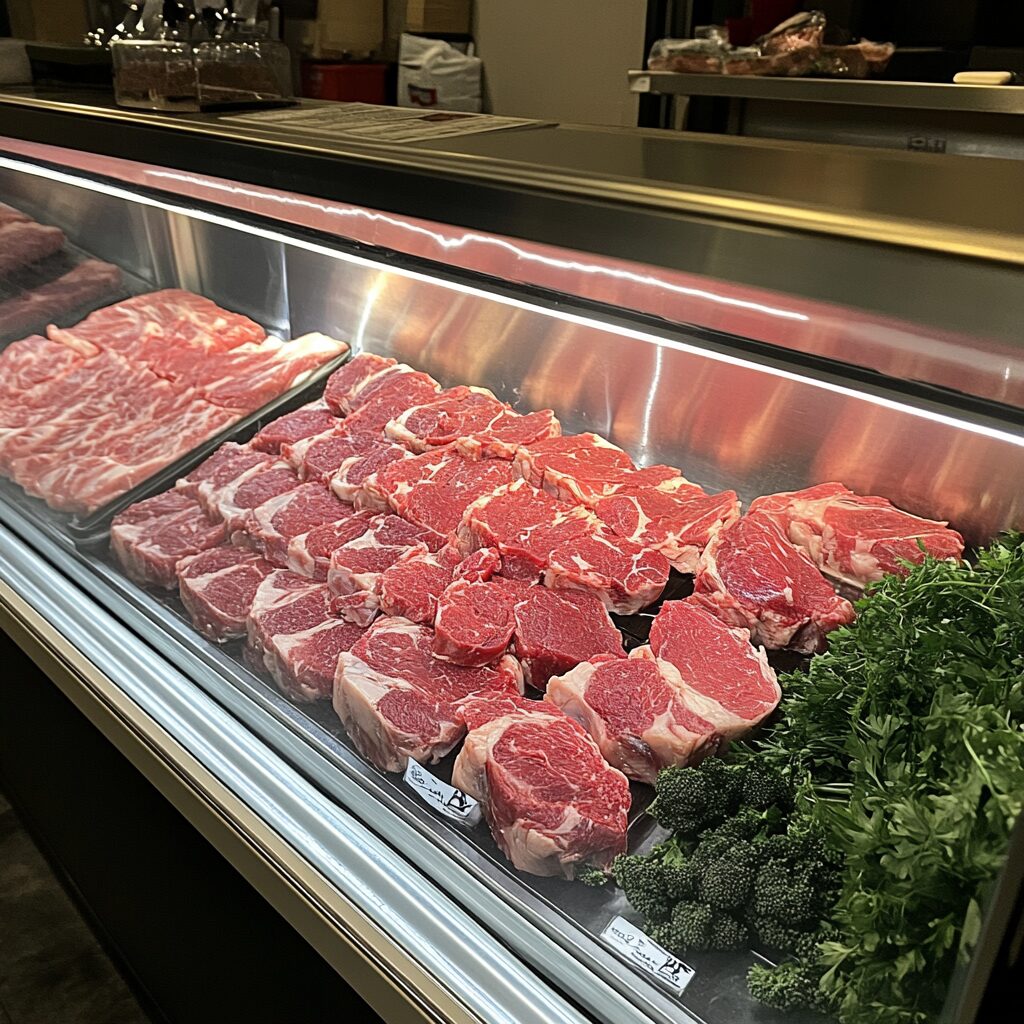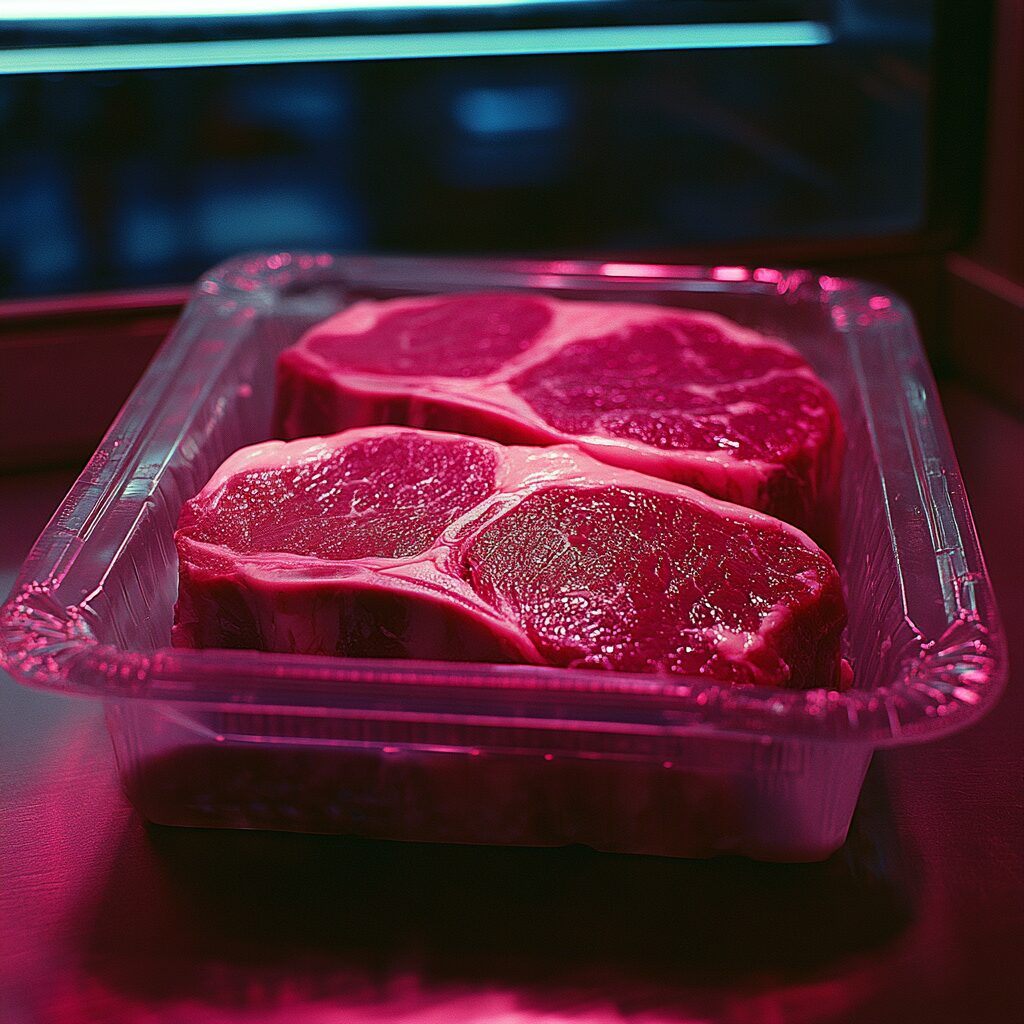Next time you’re admiring those perfectly red steaks or pristine chicken breasts at your local supermarket, you might want to take a closer peek. Behind that appetizing display lies a complex system of techniques and strategies designed to maintain the illusion of freshness – sometimes well beyond what meets the eye. Understanding these methods isn’t just about being an informed consumer; it’s about making smarter choices for your health and wallet.
Temperature manipulation affects meat color

Most consumers don’t realize that the bright cherry-red color of beef isn’t actually its natural state. Fresh beef initially appears purple-red due to myoglobin, a protein that turns bright red when exposed to oxygen. Supermarkets carefully control temperature and oxygen exposure to maintain this appealing red hue.
When meat experiences temperature fluctuations, the packaging might show signs of “bubbling up.” This separation between the meat and its plastic covering often indicates that the product has undergone temperature changes, potentially compromising its safety and quality.
Stores maintain strict temperature logs and monitoring systems to prevent these issues. However, even brief power outages or equipment malfunctions can affect meat quality, though these changes might not be immediately visible to shoppers.
Water absorption increases weight and profit
Adding water to meat is a common practice that serves multiple purposes. While it helps maintain moisture levels, it also increases the product’s weight – and consequently, the store’s profits. This practice is particularly common with poultry and pork products.
The absorption process occurs during packaging and storage. Some meats might contain up to 12% added water, which explains why your chicken breast might shrink significantly during cooking. While this practice is legal, stores must declare added water on the label.
The water content can mask early signs of spoilage and affect the meat’s texture. Understanding this helps explain why supermarket meat often releases excessive liquid during cooking, unlike meat from specialty butcher shops.
Strategic packaging preserves appearance

Supermarket packaging isn’t just about protection – it’s a sophisticated system designed to extend shelf life and maintain visual appeal. Modified atmosphere packaging reduces oxygen exposure, slowing the natural aging process and color changes.
The plastic wrap’s thickness and composition affect how much oxygen reaches the meat. This explains why meat from the butcher counter might change color faster than pre-packaged options, despite potentially being fresher.
Some premium cuts receive special vacuum-sealed packaging that can extend shelf life up to 21 days. However, this preservation method often results in a darker, less appealing color until the meat is exposed to oxygen.
Marinades and sauces mask aging meat
When meat approaches its sell-by date, stores employ creative solutions to avoid waste. Adding marinades or sauces to aging cuts serves multiple purposes – it masks visual imperfections, adds value, and extends shelf life.
This practice is particularly common with chicken and pork products. While the meat remains safe to eat, the marinade might conceal signs that would otherwise indicate it’s near the end of its optimal freshness period.
Some stores create pre-seasoned options or “value-added” products from cuts that aren’t selling quickly enough. While convenient, these items often carry a higher price per pound than their unseasoned counterparts.
Display case lighting affects perception

Supermarket lighting isn’t random – it’s carefully designed to enhance the appearance of meat products. Specialized bulbs with specific color temperatures make red meat appear redder and chicken look more appealingly pink.
The angle and intensity of display case lighting create shadows and highlights that emphasize the meat’s marbling and texture. This strategic illumination can make average cuts appear more premium.
Some stores use LED systems that reduce heat while maintaining optimal color rendering. This technology helps preserve the meat’s appearance without accelerating spoilage through temperature fluctuations.
Date labeling creates artificial urgency
The dating system on meat packages isn’t as straightforward as many assume. Use-by dates are often conservative estimates based on optimal storage conditions, not absolute spoilage indicators.
Stores frequently adjust these dates based on various factors, including arrival time, cutting date, and visual inspection. This flexibility allows them to maximize selling time while maintaining safety standards.
Some retailers use “manager’s special” labels on meat approaching its sell-by date. While these offers can provide value, they require immediate use or freezing to ensure safety.
Premium positioning affects perceived quality
Product placement within the meat department influences consumer perception. Premium cuts often occupy eye-level spaces with better lighting and more attractive packaging, while basic cuts might be placed lower or higher.
Some stores create special sections for “premium” or “natural” meats, even when the quality difference might be minimal. This segregation often justifies higher prices through presentation rather than substantial quality differences.
The practice of positioning certain cuts next to obviously inferior options makes the better cuts appear even more appealing, encouraging higher-priced purchases.
Understanding these supermarket strategies empowers consumers to make more informed decisions. While many of these techniques serve legitimate purposes in food preservation and presentation, they shouldn’t be the sole factors in purchasing decisions. The most reliable indicators of meat quality remain its firmness, color consistency, and proper storage temperature – aspects that careful observation can reveal despite marketing techniques.

